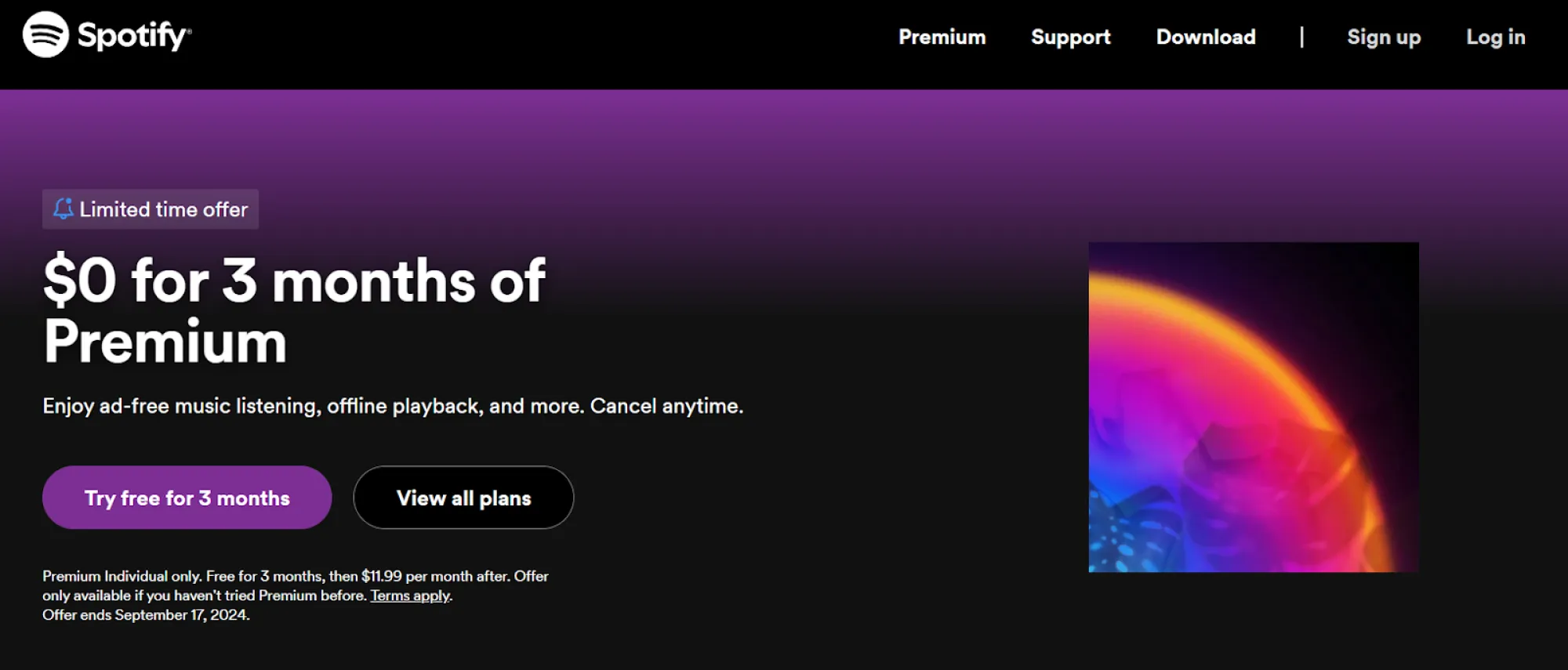Picture this: you’ve signed up for a new project management software tool. You don’t have to go through any demos or sales calls. It’s just you tinkering around and, suddenly, you can’t imagine life without it. That’s the magic of product-led growth (PLG).
If you’ve ever become so immersed in a product that you immediately told your friends or upgraded to a paid plan, you’ve experienced PLG firsthand. This article covers how and why products can do the talking and bring in new customers along the way.
What is SaaS product-led growth (PLG)?
SaaS product-led growth (PLG) is a strategy that lets the product attract and retain customers on the merit of its performance. Unlike sales-led growth, PLG focuses on delivering an amazing experience for customers through the product, which essentially sells itself.
For a PLG strategy to be effective, your product needs to be easy to use and valuable enough for customers that they can jump straight into using it on their own. Wait, we hear you ask, surely every SaaS product needs to do that? Otherwise it’s not a very viable business model. A good example of this is Northflank, which lets developers deploy services and databases in minutes, without needing to talk to sales at all.
While that’s true, many hide their product’s benefits behind a wall of lengthy sales calls, demo appointments, and hidden price plans. With PLG, you target end users rather than the company’s top decision makers, eliminating barriers so they can jump straight into using your product.
How PLG drives customer

Selling your SaaS product directly to large organizations is time-consuming, costly, and resource-intensive. If you have a small sales team or big growth goals, PLG can be a significantly more effective way of acquiring new customers.
Here’s why:
- It has a low barrier to entry: How often have you signed up for a free trial or used the freemium version of an app? This is a standard part of PLG, letting users experience the product and all of its benefits without any initial outlay.
- It allows users to self-serve: PLG gives users the freedom to explore your product at their own pace. That flexibility carries throughout the rest of their journey, giving them the ability to renew their subscription and upgrade their plan as needed.
- It turns users into advocates: If your product is well-designed and users are able to freely experience that design, it encourages them to spread the word. Word-of-mouth marketing, referrals, and reviews are as good as it gets in today’s competitive online landscape. And with 98% of software buyers reading reviews before purchasing, it’s a great growth opportunity.
- It draws on data to make improvements: PLG strategies monitor how customers interact with your product so you can fine tune its functionality, eliminate pain points, and provide them with genuine value. Every improvement you make increases customer lifetime value, decreases customer acquisition costs, and brings in more customers.
Core elements of a successful PLG strategy to drive customer acquisition
Let’s look at the different tactics you can take up for PLG, along with some real-world examples from product-led SaaS companies.
Conduct user research to inform product design
Imagine you’re inviting friends over for dinner. Do you just cook all of your favorite dishes? Or do you WhatsApp everyone to get a sense of what people like? If you want the meal to be memorable, chances are it’s the latter.
Designing software products is no different. You need to understand your audience by diving into user research through surveys and interviews and usability testing.
Take Slack, for example. Slack’s journey to becoming a leading collaboration and messaging tool is a prime example of the importance of user research in informing product design.

Slack set up a pilot channel to test new features on real users and get instant feedback. This has become a core part of their product development and is a great reminder of the importance of keeping users at the heart of SaaS solutions.
Develop a compelling value proposition for free offerings
What benefits does your product deliver? How will it make users’ lives better? This is your value proposition.
Make sure users can gain that value even when using the free version. PLG relies on a freemium or free trial option to draw users in, so it’s essential that you provide genuine value at this stage. But remember, you don’t want to give everything away as you want them to upgrade eventually.
Dropbox’s freemium model is a great example of this, giving users generous storage space for free. This shows them how useful the product is, then Dropbox swoops in with a tiered pricing plan complete with even more features and functionalities that promise to make people more productive.

Once you’ve nailed your free offerings, you can fine tune the higher pricing for your SaaS product.
Design an intuitive onboarding process
If things seem complicated from the get-go, chances are users won’t set up an account, let alone consider a paid plan. This is especially the case when it comes to more critical SaaS products—ERP platforms or financial software, say.

Sage does a fantastic job in this area. The onboarding process for their accounting software for financial services includes human support and access to community forums, creating an immediate sense of trust and autonomy. They even provide regular masterclasses and webinars to help users feel more confident using the software.
Learn from user feedback and data
The user experience is central to PLG, and the best way to improve it is by learning from user feedback and data. Doing so helps you identify areas for enhancement and make sure your product remains relevant and valuable.
Zoom’s rapid growth can be attributed to its commitment to learning from user feedback. In the founder’s own words, the platform’s main focus has always been “to provide a cloud video communications solution that would make customers happy”.
They do that through continuously collecting customer opinions through Net Promoter Score (NPS) surveys and in-app prompts to quickly spot and resolve pain points and improve the user experience.
Common challenges and how to overcome them
While we’ve been bigging up PLG, it’s important to understand that this approach does have its challenges.
Balancing free and paid features

To attract users, your free offering needs to be valuable and functional, but it should leave room for premium features that justify a paid subscription.
Focus on core functionalities in the free version to show off your product’s value. Then keep advanced features and higher usage limits for paid plans.
Review and adjust these features on a regular basis, paying close attention to user feedback and competitors. You want to keep offers relevant and exciting, but make sure paid features benefit users just that little bit more.
Remember to budget and forecast your free offerings so you know whether they’re sustainable.
Using subscription management software can help you track your product’s performance through the entire customer journey. So after initial sign-up, you can report on renewals, upgrades, downgrades and cancellations. This gives you the data you need to determine budgets, report on revenue and make necessary adjustments.
As PLG is all about growth, having this overview of your finances will be essential.
Ensuring a smooth user experience across different platforms
Users are becoming increasingly demanding—they want a seamless experience that’s consistent across different platforms and devices. To nail this, you need more than just user feedback. You have to invest in responsive design and thorough testing.
Responsive design is when your product automatically adapts to different screen sizes and orientations. In tandem, running tests across various devices and operating systems will help you spot issues before they become problems for users.
Measuring the right metrics for success
You don’t need us to tell you how important data is. Focusing on the right data by measuring certain key performance indicators will be key to PLG success. These metrics will help you understand how well your product is performing and where to make improvements:
- User acquisition rates: Is your product attracting new users? Track the number of sign-ups or downloads over time to spot trends, and track what channels bring in the most new customers.
- Conversion rates: Are free users converting into paid subscribers? Look at the percentage of users who’ve upgraded within a set timeframe and track what’s triggering these conversions. That might be certain features or hitting a milestone such as time spent using your product.
- User engagement levels: How and when are people using your product? Which features do they use the most? Keep an eye on metrics like daily active users (DAUs) and time spent on the platform. Heatmap tools are also useful for identifying what buttons they dwell on or areas of the dashboard they engage with most.
- Churn rates: How many users are leaving? Start by figuring out how many users cancel or don’t renew in a certain period, then dig into the data. Are there any patterns—subscription plans or behaviors, perhaps—that might be an underlying cause? Use these insights to tackle retention problems head on.
Regularly reviewing these metrics allows you to make smarter, data-driven decisions. With these in hand, you can perfect your strategy and keep improving that all important user experience.
Key takeaways
Product-led growth has the potential to completely change how users discover and stick with your SaaS solution. Instead of being bombarded with marketing and sales, let your product market and sell itself. If it’s well designed, solves people’s pain points, and offers something unique, everything else will fall into place.
But product-led growth goes beyond the product itself. All these tips and tricks, from carefully balanced freemium options to simplified onboarding, are a part of the process.
Make using your product effortless and fun and you won’t need to sell it. Customers know something good when they use it.

















